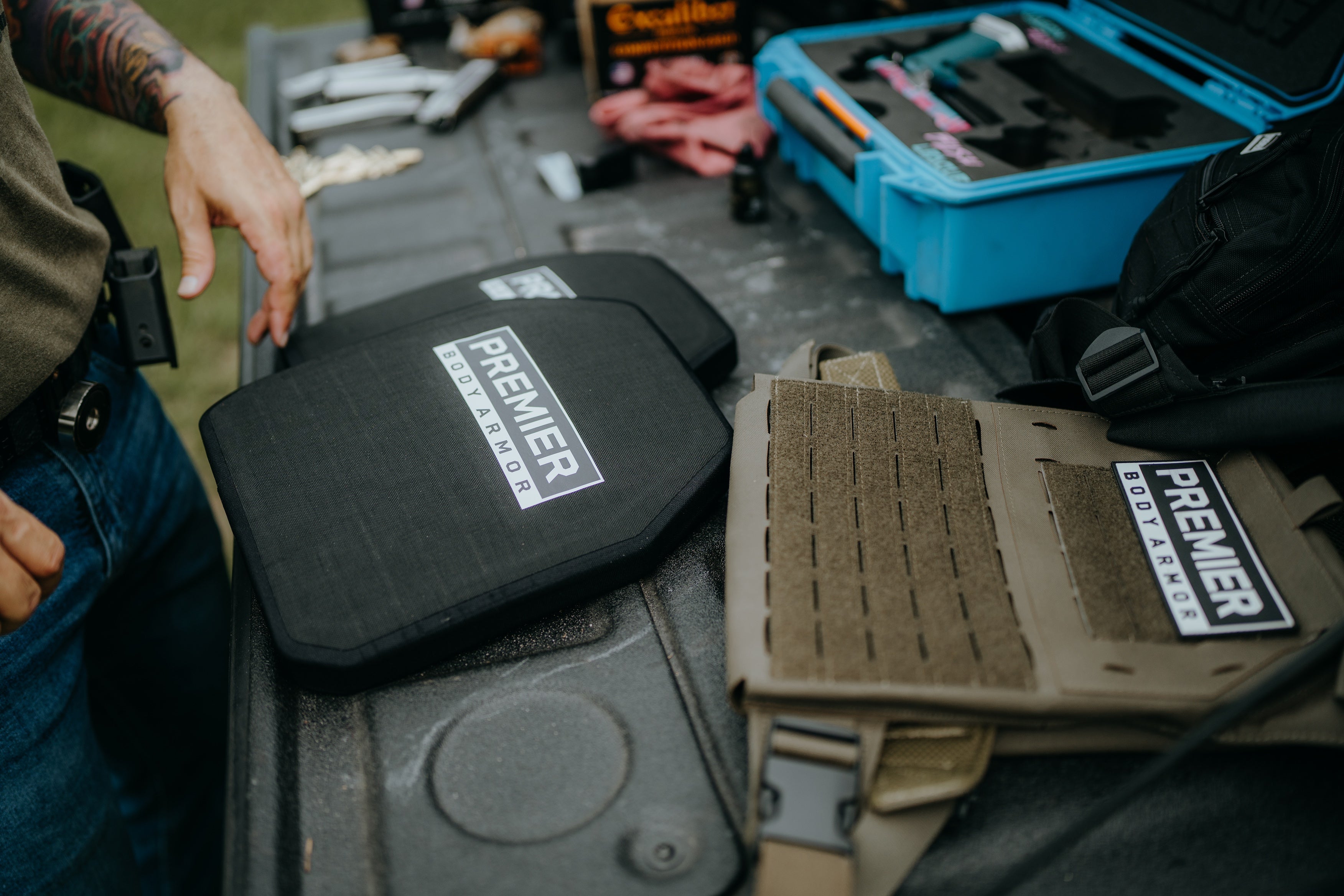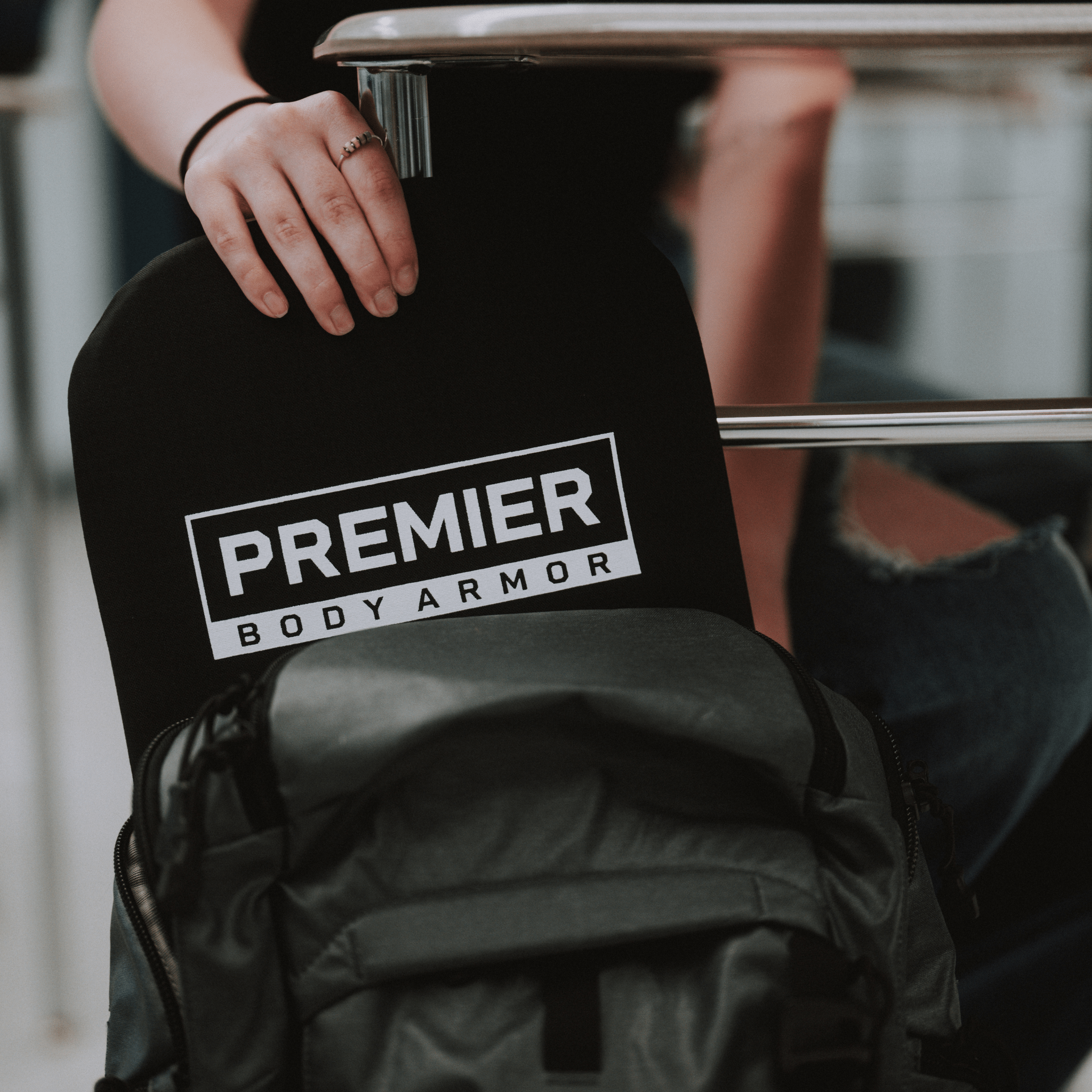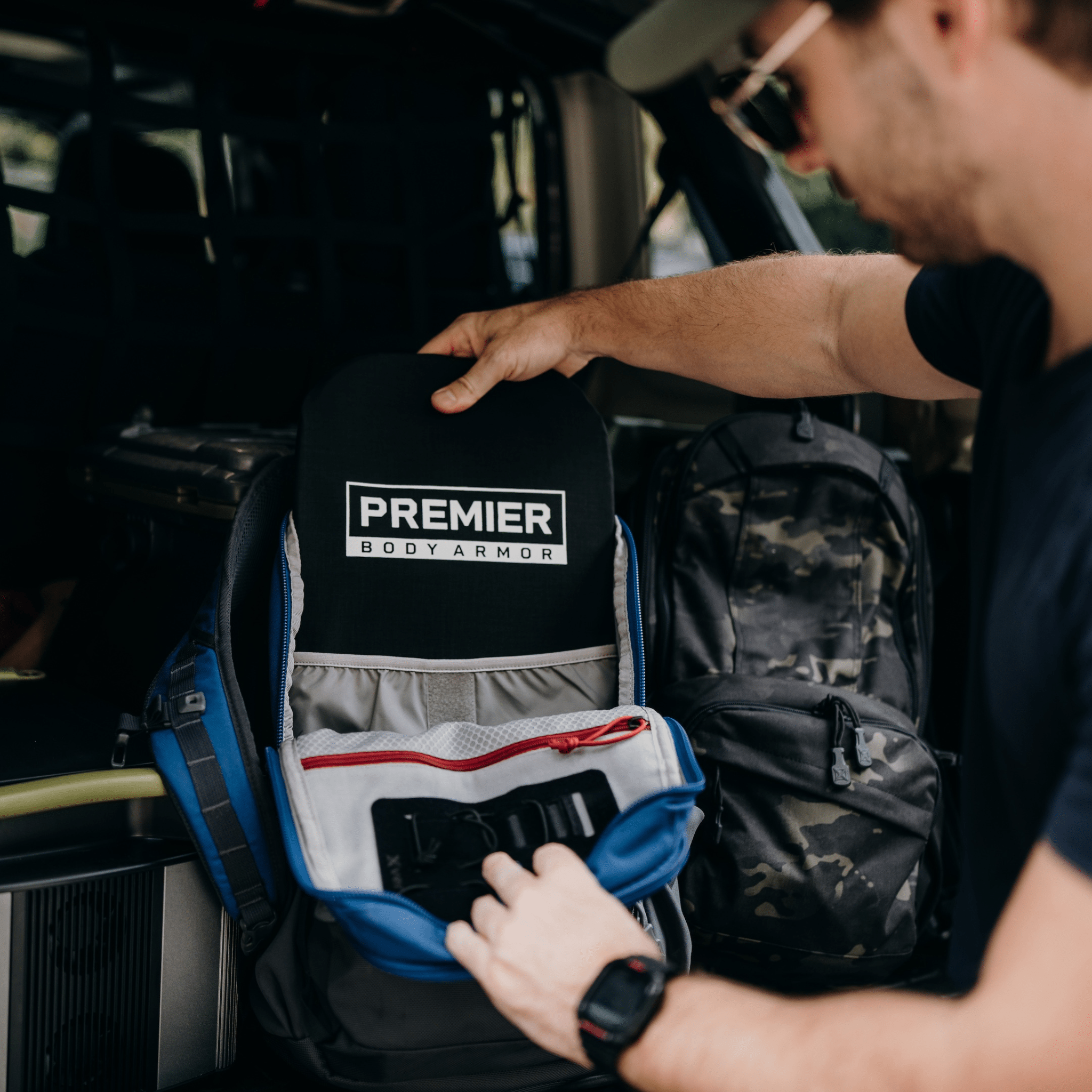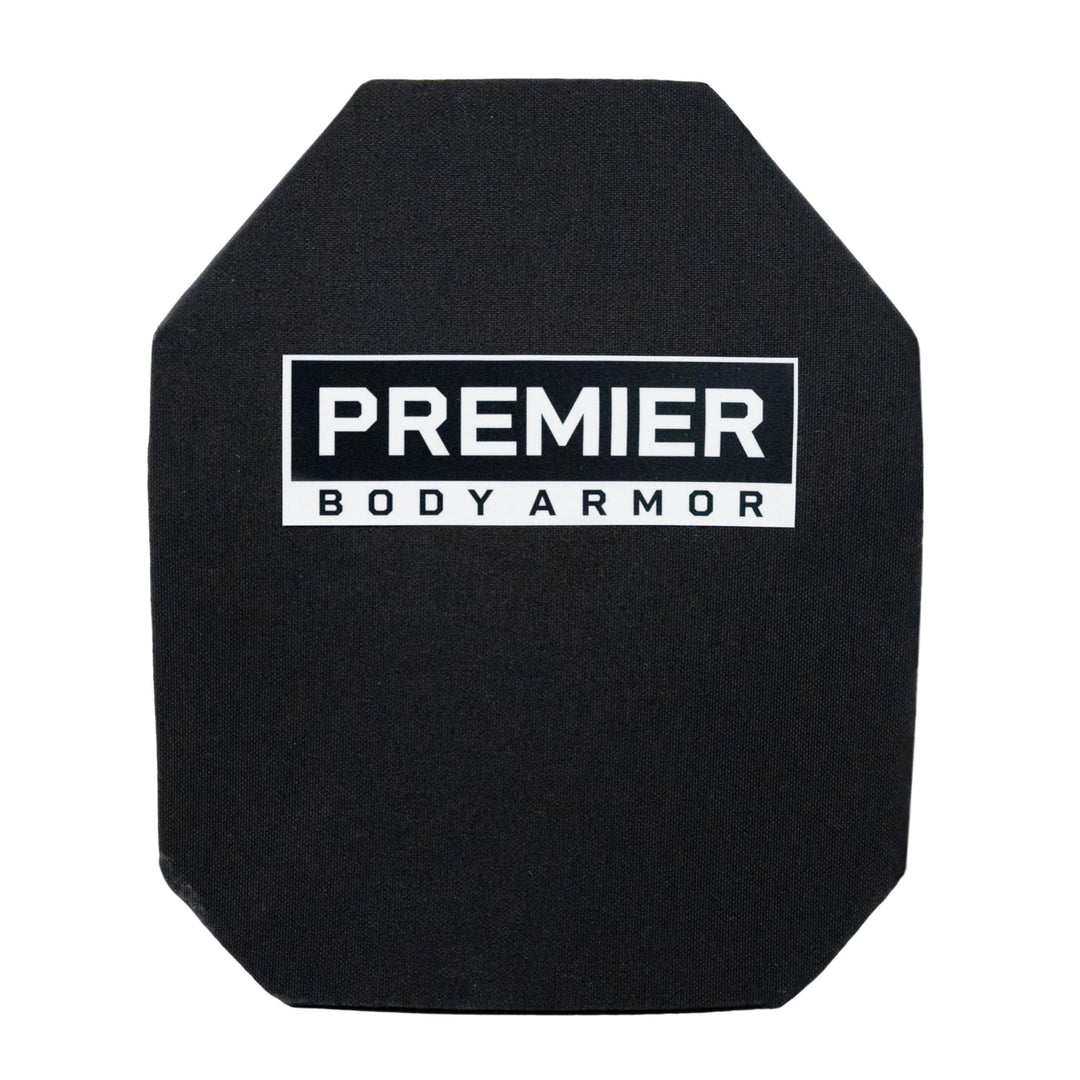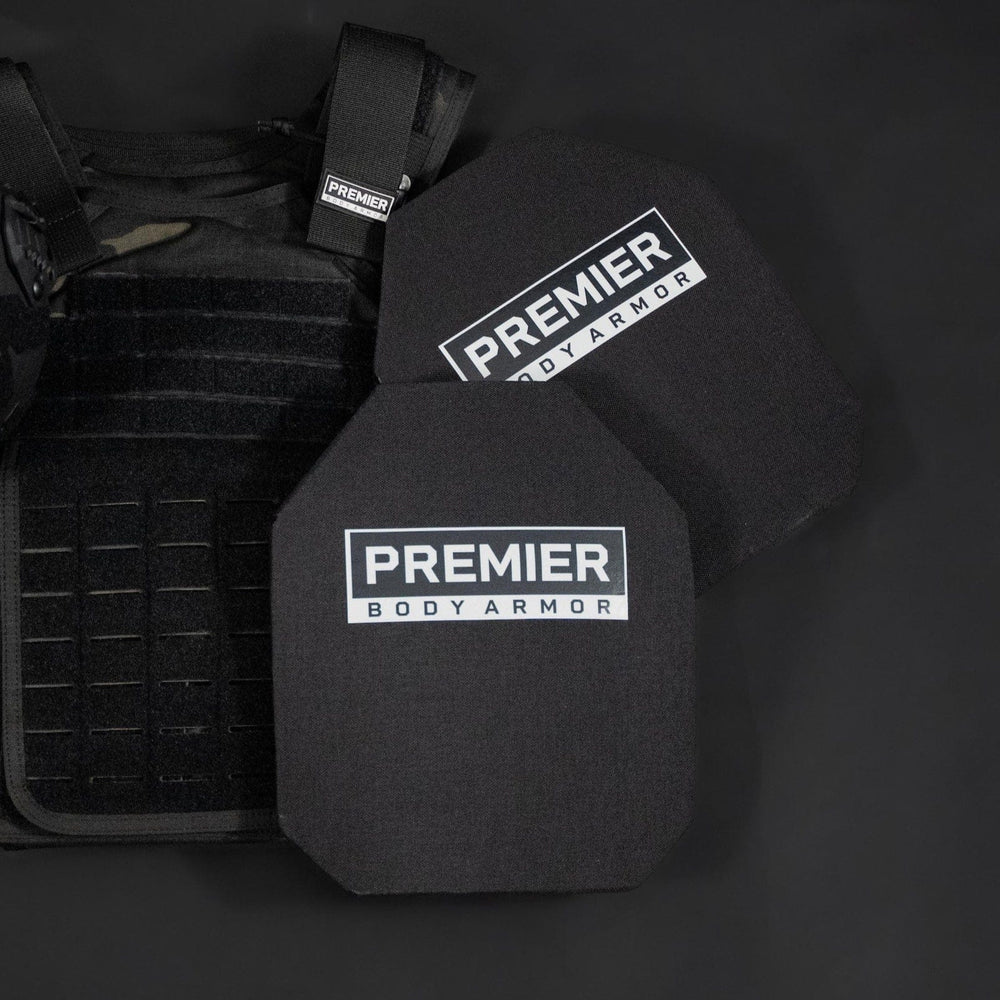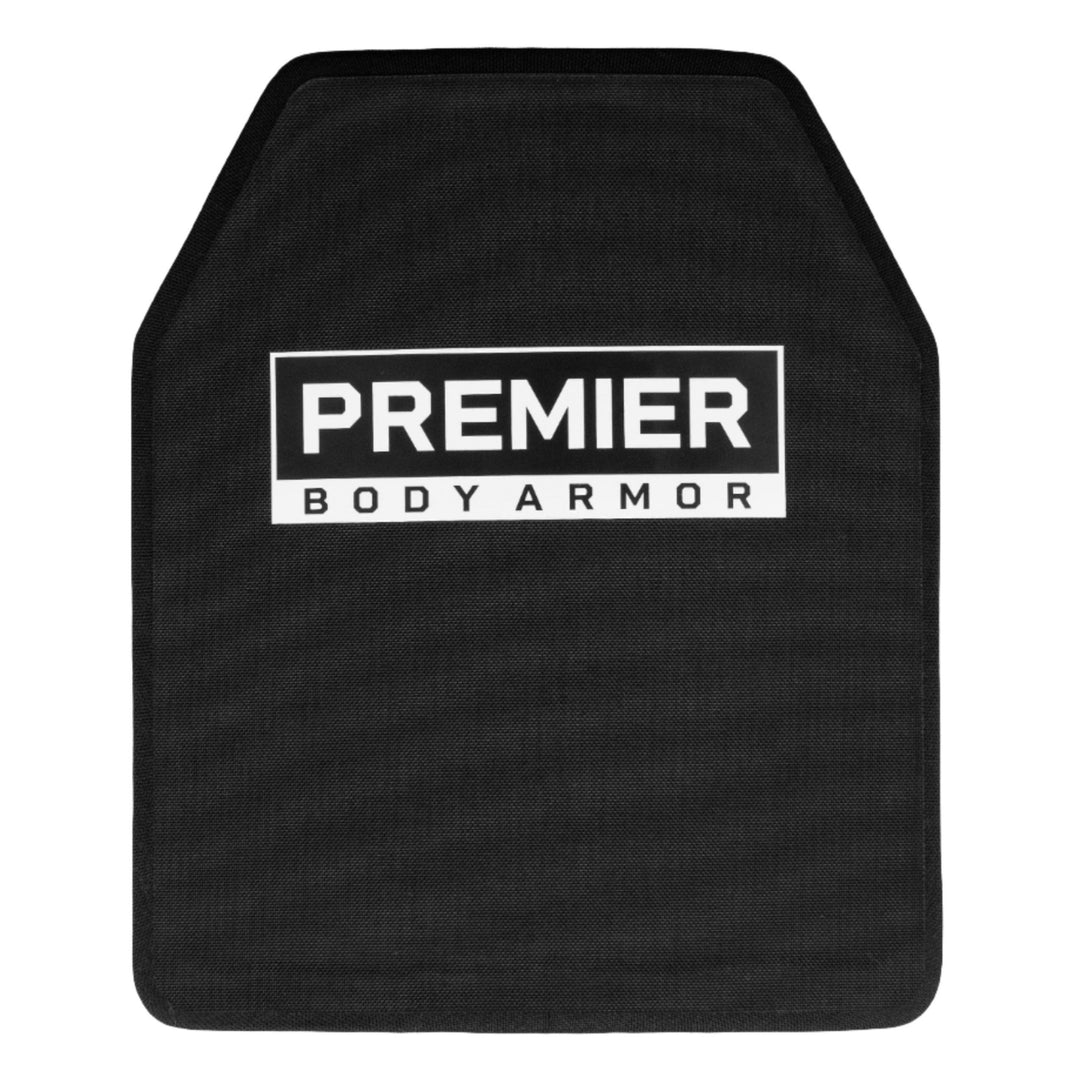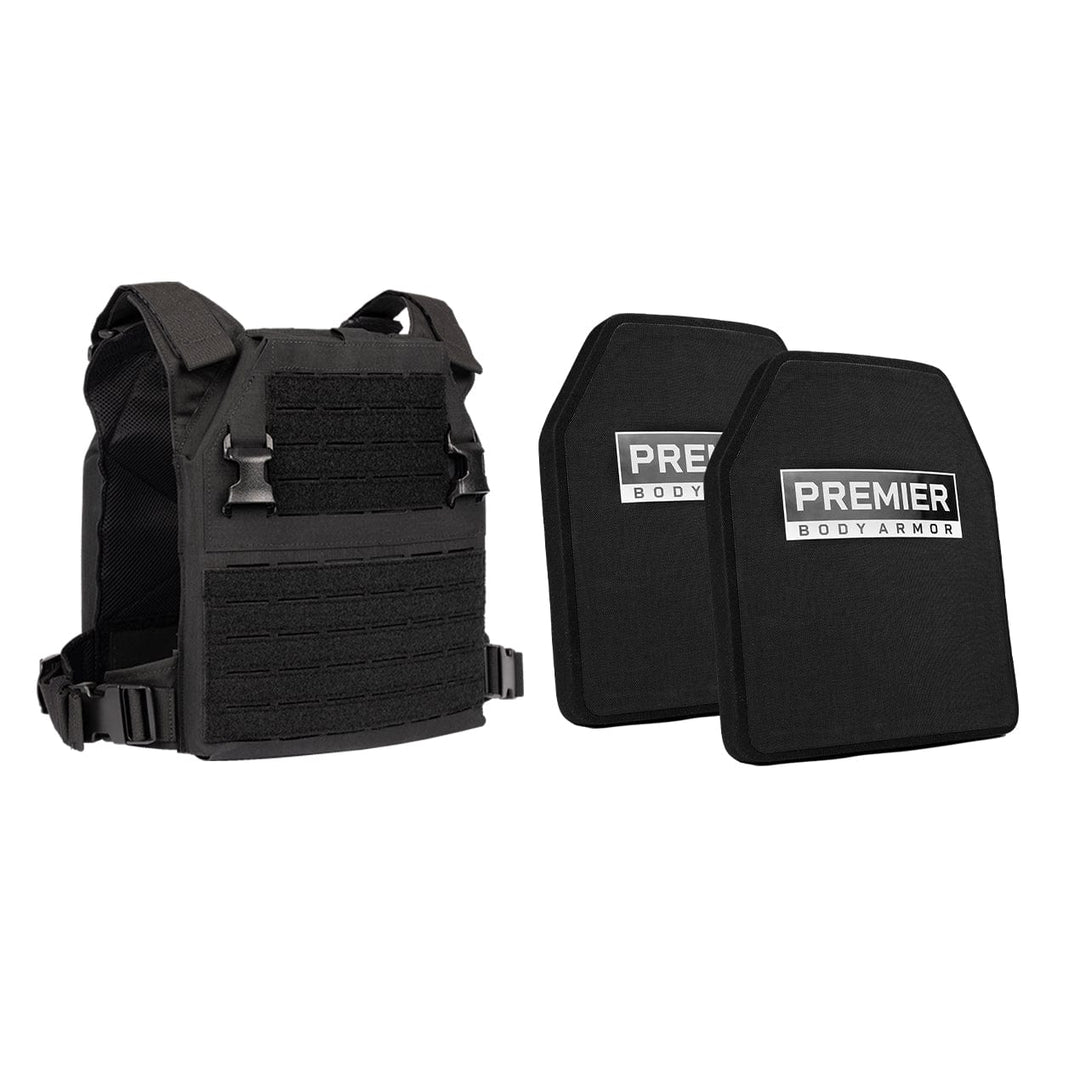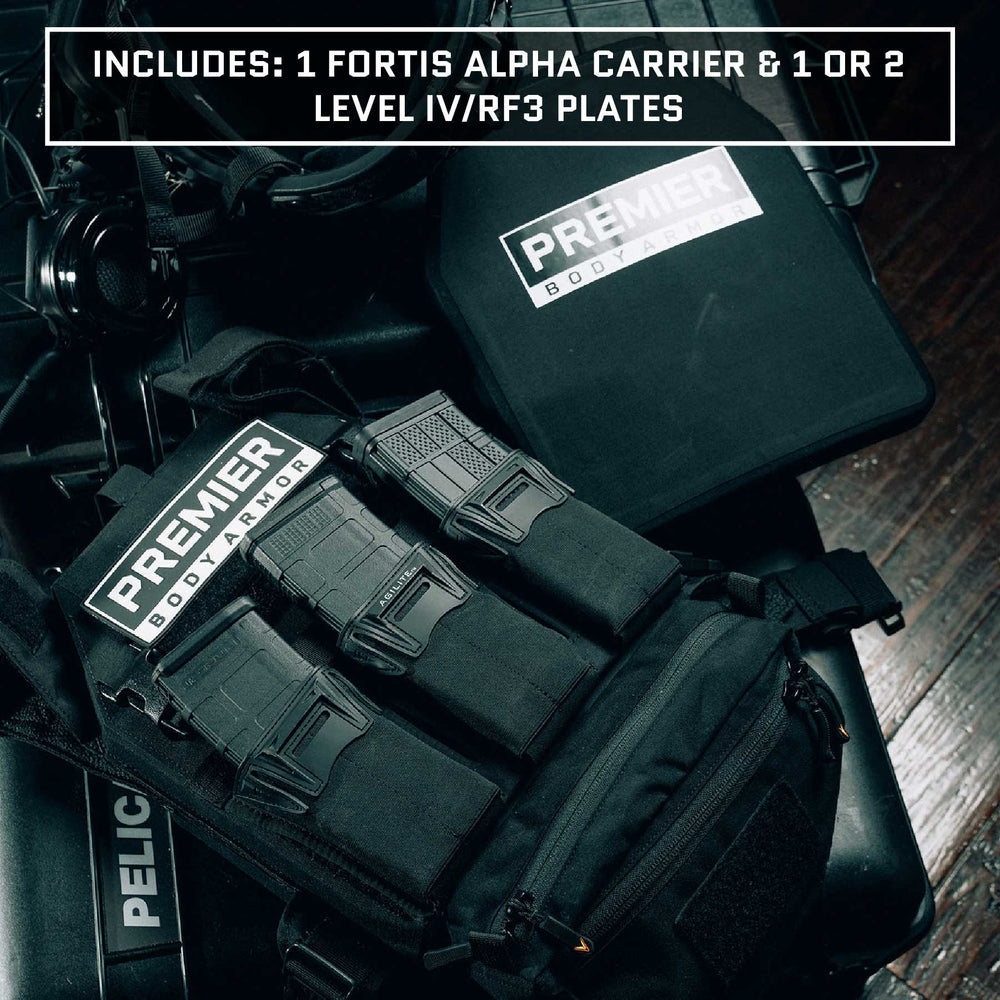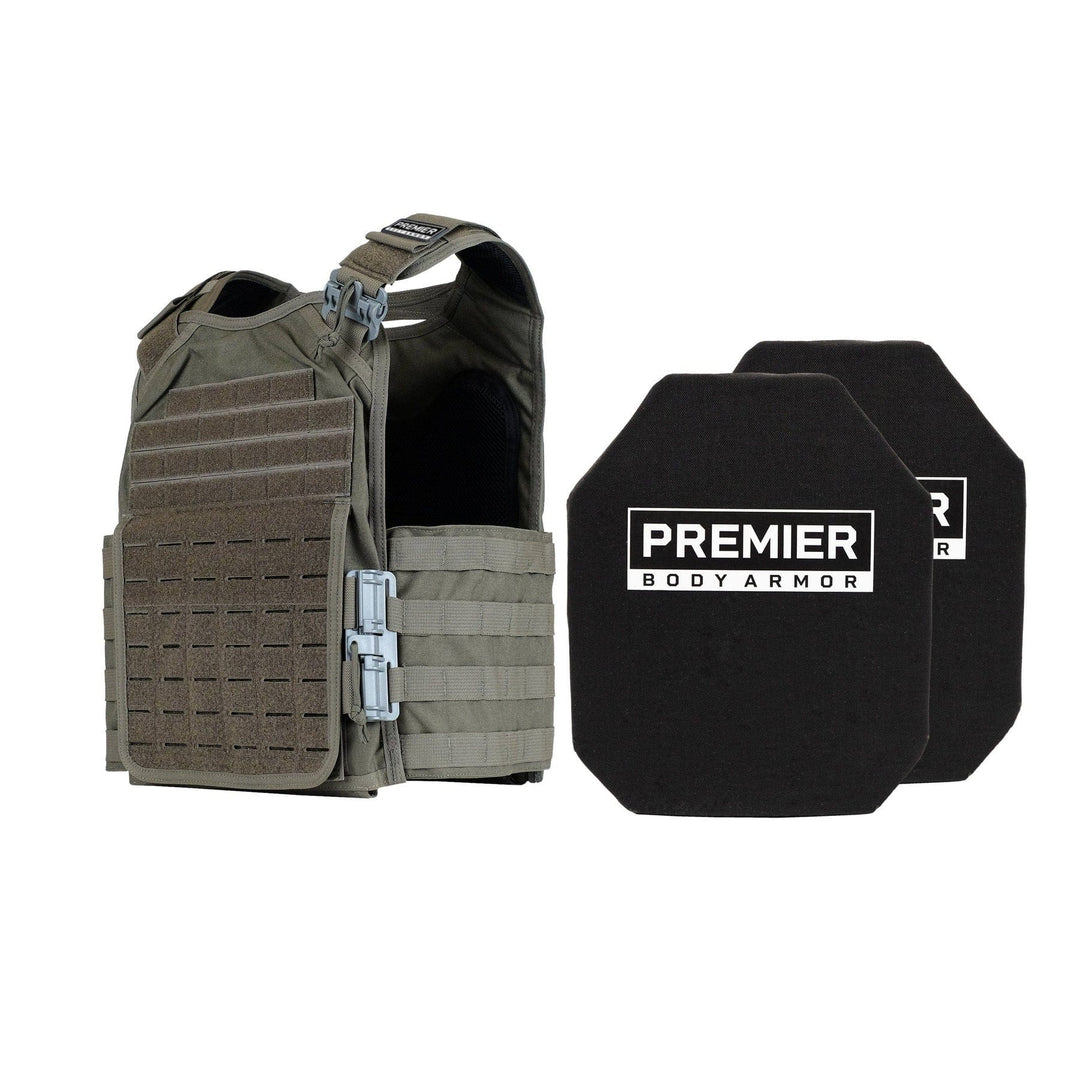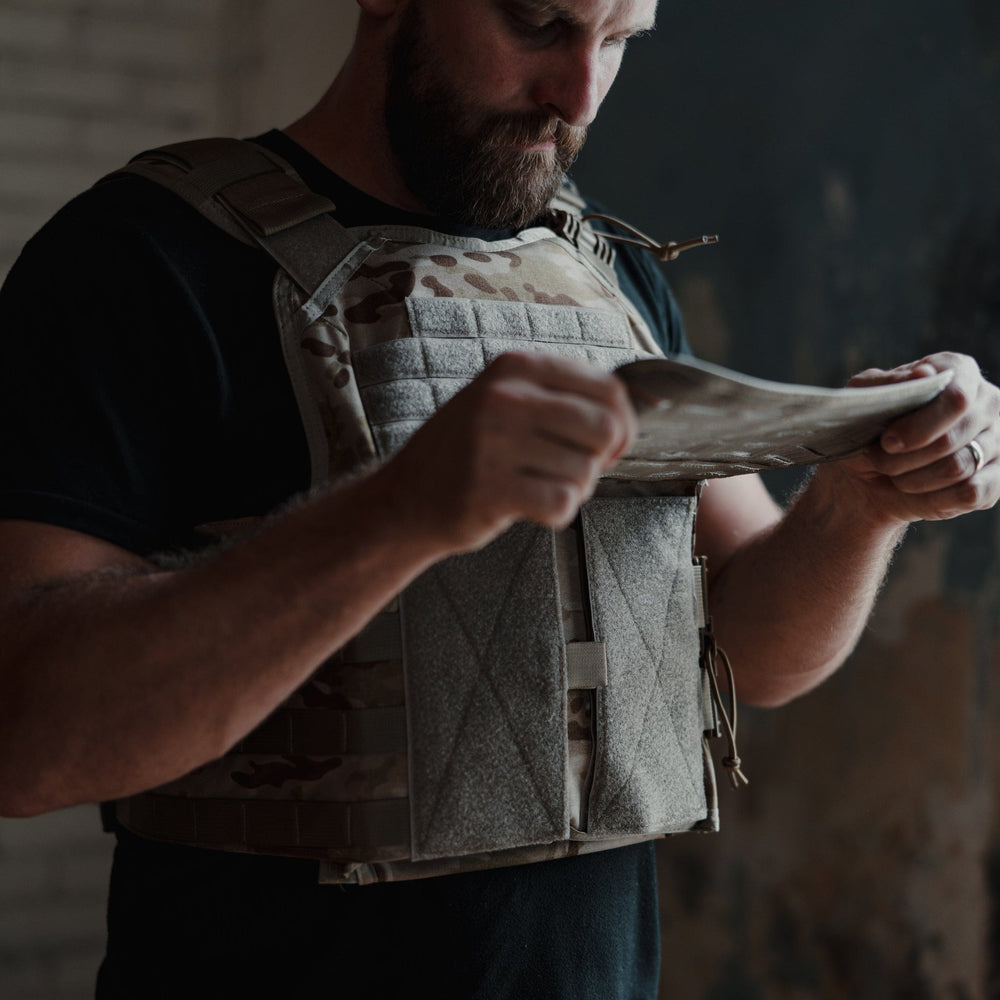
Maximum Rifle-Rated Protection with Lightweight Options
Level 4 body armor, also known as level IV body armor, is a type of ballistic armor that is capable of stopping armor-piercing bullets and other high-powered rounds. Here’s some information on the components of level 4 body armor and what it can do for you.
What Does Level 4 Body Armor Plates Stop?
As one of the highest levels of protection available, level 4 body armor is designed to stop some of the most powerful rounds from rifles and other high-powered firearms. At a distance of 15 meters or less, level 4 body armor stopping power is enough to stop the following types of bullets based on NIJ testing:
- 7.62x63mm M2 AP (.30-06)
Premier Body Armor’s Level IV plates have been additionally tested to withstand the following:
- 7.62×39 123gr PS Ball (MSC)
- 7.62×51 147gr FMJ (M80) – up to 2850 ft/s
- 5.56x45 55gr (M193) - up to 3150ft/s
- 5.56x45mm 62 grain steel core (M855)
- 5.56x45mm M855 A1

Level 4 body armor is the strongest rifle-rated body armor that the NIJ has set standards for. All of our level 4 body armor has been tested against common handgun rounds and meets the NIJ 0101.06 ballistic standard for level 4 stopping power.
Understanding body armor ratings can be complicated. We have made a comprehensive guide to body armor ratings to explain the rating system so that you can decide which is right for you.
In the next section, we'll look at how level 4 body armor is made and explore the different level IV ballistic plates available.
How to make level 4 body armor
There are three main types of materials used in the construction of level 4 body armor plates: ceramic, steel, and polyethylene. Each material has its own unique properties and benefits.
| Material | Weight | Multi-Hit Capable | Durability | Notes |
|---|---|---|---|---|
| Polyethylene | Lightest (5–6 lbs) | ✅ Yes | High | Lightweight, multi-hit capable plates. Needs ceramic or silicon carbide strike face. |
| Ceramic | Moderate (6–8 lbs) | ❌ No | Low (single hit) | Shatters on impact, requires replacement after hit. |
| Steel | Heaviest (8–10+ lbs) | ✅ Yes | High | Heaviest option, spall risk, less energy dispersion. |
Level 4 / Level IV Ceramic Plates
Ceramic plates are the most commonly used material for level 4 body armor. They are made from a combination of ceramic and aramid fibers, which are woven together and bonded with resin. The result is a hard, lightweight plate that can stop most high-powered rounds.
Ceramic plates work by shattering the round upon impact, dispersing the kinetic energy and reducing the risk of injury to the wearer. As tough as these plates are, they are not multi-hit capable and must be replaced after sustaining a hit.
Level 4 / Level IV Steel Plates
Steel plates are another option for level 4 body armor. They are made from high-quality steel and are often coated with a layer of spall liner to reduce the risk of injury from fragmentation upon impact.
Steel plates are heavier than ceramic plates, but they are more durable and can withstand multiple hits. They also need to be replaced less often than ceramic plates. The tradeoff is that these plates are less effective at stopping some rounds than ceramic plates, and they are less effective at dispersing energy from a bullet impact. Getting shot with a steel plate will hurt more than a ceramic plate, and there is a higher risk of broken ribs and other injuries.
Level 4 / Level IV Polyethylene Plates
Polyethylene plates are the lightest of the level 4 body armor types. These plates are made from high-density polyethylene fibers that are pressed and cut into shape, then layered to form the plate. The result is a flexible, lightweight plate that can stop most high-powered rounds. This is the material used in Premier Body Armor's plates, as it's a great choice for someone wanting protection against higher threat levels but a lightweight kit.
Polyethylene plates are a popular alternative to ceramic or steel plates because they are lightweight and durable. They are significantly lighter than ceramic or steel plates, making them more comfortable to wear for extended periods. They are less likely to cause fatigue or back strain, especially for those in active duty or law enforcement roles.
Polyethylene plates also have great ballistic properties and are capable of stopping most common rifle rounds, and are multi-hit capable. They are also relatively inexpensive compared to ceramic or steel plates.
The downside is that polyethylene plates are not as durable as ceramic or steel plates, and are more prone to wear and tear. Furthermore, they are more susceptible to damage from exposure to heat and UV radiation. However, it's not difficult to mitigate this by having a good care process in place.
What makes a plate multi-hit capable?
To be multi-hit capable, a plate must be able to withstand multiple hits from the same or similar rounds without failing. The ability to be multi-hit capable depends on the material and construction of the plate.
Ceramic plates are not multi-hit capable and must be replaced after sustaining a single hit. Steel plates and polyethylene plates, on the other hand, are both multi-hit capable. Premier Body Armor takes this further, by adding a tile composite strike face on our Level 4 plates. This means a hit to one tile won't impact surrounding tiles, improving the multi-hit capability.
Overall, the choice of material for level 4 body armor plates depends on the wearer's needs and preferences. Ceramic plates are lightweight but less durable, steel plates are heavy but more durable, and polyethylene plates are lightweight and multi-hit capable.
In the next section, we will discuss all of our options for lightweight level 4 body armor plates.
Lightweight level 4 body armor
In recent years, advancements in material science and manufacturing processes have led to the development of lightweight Level 4 body armor. These plates are made with advanced ceramics and other high-strength materials that are lighter than traditional ceramic plates. They offer the same level of protection against high-powered rifle rounds while reducing the weight and bulk of the armor. For the lightest level IV body armor, we recommend plates made from polyethylene.
What plate carriers to use with level 4 body armor
When choosing a plate carrier for Level IV body armor, it is important to select one that is able to hold a level 4 plate securely and comfortably. Our company offers a variety of plate carriers, each designed to fit certain needs.
For those looking for a standard, well-rounded plate carrier with side cummerbund protection, our Core Plate Carrier is a great option. We also offer a Hybrid Tactical Vest, which comes with built-in level 3A soft armor and pockets to hold level 4 plates. This vest is the perfect choice if you are on the fence about whether to purchase level 4 protection.

If you wish to get level 4 protection at the lightest weight possible, our Falcon Carrier offers a minimalistic design, and may be a more economical option. For more information on choosing the right plate carrier, read our article on setting up your plate carrier.
Each of these plate carriers is designed 100% Made in the USA with the highest quality materials and workmanship to ensure maximum protection and comfort.
Level 4 Body Armor FAQs
If you are considering purchasing level IV body armor, you may have some questions about its effectiveness and practicality. Here are some frequently asked questions about level 4 body armor:
Can civilians own level 4 body armor?
Yes, civilians can legally purchase and own level 4 body armor in most states in the United States. However, some states have restrictions regarding body armor, so it's important to check the laws in your state before purchasing.
Many customers wonder if they have the same access to body armor as military personnel and law enforcement. As an industry leader in body armor innovation, we utilize the same technology that is currently available to the US military. If you are in search of a military bulletproof vest level 4, you don’t need to have any special connections with a military supplier. We offer a selection of plate carriers that can hold level 4 armor plates to create a level 4 vest.
How much does level 4 body armor weigh?
The weight of level 4 body armor can vary depending on the material used, but it typically weighs between 5 and 10 pounds per plate. This can make it quite heavy to wear for extended periods of time, so it's important to consider the weight when selecting a plate carrier and body armor system.
How Much Does Level 4 Body Armor Cost?
The cost of level 4 plates varies depending on materials, size, and quality, but can range from several hundred dollars to over one thousand dollars. If you're looking for more affordable yet still high quality level 4 plates and accessories, check out our Fortis product line.
Is level IV body armor concealable?
Body armor level 4 is typically not concealable, as it is designed to provide maximum protection and coverage. Ballistic plates level 4 are larger and thicker than lower-level armor, so they are not as easily hidden under clothing. However, there are some specialized carriers and systems that are designed for covert use. Our Discreet Plate Carrier is designed to be worn discreetly under plain clothing.

Are level IV plates bulletproof?
No body armor is completely bulletproof. Level 4 body armor is designed to completely stop high-powered rifle rounds, but it may not be effective against more rare types of ammunition. Level IV plates are more than enough for virtually all people’s needs. At Premier Body Armor, our plates are manufactured here in the US, and come with an industry leading 10 year warranty. Finding the right rifle-plate is no longer difficult.
Are Level 4 plates stab proof or knife resistant?
Level 4 body armor is not designed to be stab-proof or knife resistant. While the plates may provide some level of protection against sharp objects, they are not specifically designed for this purpose. If you need protection against knives or other sharp objects, consider purchasing specialized body armor.
Do I need a spall liner for my Level 4 plate?
A spall liner is not required for the best level 4 body armor, but it is highly recommended, especially with steel plates. When a high-powered bullet strikes a plate, it can cause fragments of the plate to break off and fly in all directions. A spall liner is a layer of material that helps to contain these fragments, reducing the risk of injury to the wearer.
Many plate carriers come with spall liners, but if yours doesn't, it's important to purchase one separately. Our plates all come equipped with a protective coating that helps serve as spall protection. This combined with the polyethylene means there is no need for a spall liner with Premier's plates like with traditional steel plates.
frequently asked questions
We will sell body armor to civilians, Law Enforcement Officers, and Military Personnel in the United States who meet the following criteria:
1. Are 18 years of age or older
2. Are not a felon;
3. Are legally allowed to possess and use the item(s) in your state (If you are a New York or Connecticut resident, you must be active Law Enforcement or Military Personnel and provide necessary credentials);
4. Are purchasing this product for only lawful purposes;
5. Are purchasing this product on your own behalf;
6. Comply with all other Terms & Conditions.
Learn more about the legality of body armor in each state.
STRATIS Plates have an 8-year warranty. Fortis plates have a 7-year warranty. Soft body armor panels (for vests and backpacks) have a 5-year warranty, and each carrier has a 2-year warranty.
For warranties on specific products, please see the product page.
All products (excluding clearance items) are eligible for an easy return or exchange if initiated within 30 days of receipt, and the product(s) is in new, unused condition.
There is no re-stocking fee for returns or exchanges. The customer is responsible for any return shipping costs associated with returning the product.
Read more about our returns & exchange information.

